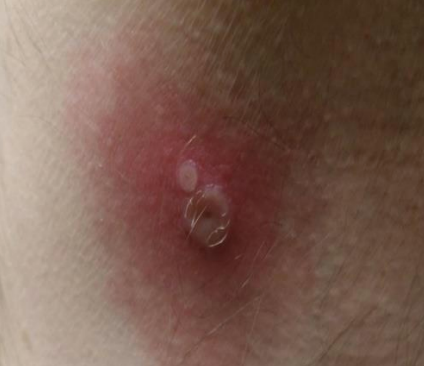Editor's Note: Are you practicing dermatology in the state of Alaska? Email our team at DTEditor@mmhgroup.com to share your insights or be interviewed.
Officials and epidemiologists from the state of Alaska recently announced the first known case of severe Alaskapox virus requiring hospitalization and leading to death in a southcentral Alaska resident.1 In the time since, the case and rare condition have garnered attention to the orthopoxvirus. But what is Alaskapox virus? Do clinicians or patients need to worry? And moreover, how does it relate to dermatology?
What is Alaskapox Virus and How Does It Spread?
For the last 9 years, officials in Alaska have been aware of a rare orthopoxvirus since the virus was first identified in an adult patient in Fairbanks, Alaska, in 2015.1
Orthopoxviruses are double-strand DNA viruses. Many of them are zoonotic in nature.1
In fact, at present, health officials believe Alaskapox virus occurs primarily in small mammals. Small mammal sampling conducted over the past 9 years has indicated identification in red-backed moles and shrews, most commonly, in the Fairbanks North Star Borough. Some evidence exists, however, that may point to its presence in various other small mammal species in the state.2
While some orthopoxviruses may be transmitted via direct human contact with skin lesions, epidemiologists and health officials report that no human-to-human transmission has been reported in this virus.3 Researchers are also uncertain as to the geographic distribution of the virus, though all reported cases have been localized solely to the state of Alaska, with 6 occurring in the Fairbanks North Star Borough and 1 infection, the most recent, reported in the Kenai Peninsula Borough.1
Individuals who are immunocompromised are considered to be at a greater risk for more severe infection, officials say.
Symptoms: How Does Alaskapox Tie Into Dermatology?
Until the most recent case of Alaskapox virus, reported infections have involved lymphadenopathy and localized rashes. Individuals with the condition have presented with 1 or more skin lesions appearing as bumps and/or pustules.3 Some patients presenting with Alaskapox virus have described their skin lesion(s) as looking like an insect bite upon presentation to a health care provider.2
Other symptoms reported by individuals with the virus have included swollen lymph nodes and joint and/or muscle pain.3
In the case of the most recent patient to be hospitalized for the virus, the patient had presented to his primary care provider and local emergency department for clinical evaluation of the subsequent skin lesions.1
The Alaska Division of Public Health has shared images from past cases of Alaskapox infection with details of date of symptom onset, and on occasion, size of lesions. Click here to review the images.
Suspect Alaskapox in a Patient? Here's What Experts Advise:
- Encourage the patient to wrap and cover skin lesion(s) with a bandage.
- Take photographs of skin lesion(s) and track changes.
- Contact the Alaska Department of Epidemiology for warranted testing and treatment, if necessary.
Should Clinicians and Patients Worry?
Since Alaskapox virus was first reported in 2015, only 7 infections total have been reported to the state of Alaska Section of Epidemiology.1
"[Alaskapox virus] appears to be more geographically widespread in Alaska’s small mammals than previously known and warrants increased statewide awareness among clinicians," wrote state officials and epidemiologists.1 "The route of exposure in this case remains unclear, although scratches from the stray cat represent a possible source of inoculation through fomite transmission."
The state's Section of Epidemiology reports that it is currently working with the US Centers for Disease Control and the University of Alaska Museum to conduct testing of small mammals for Alaskapox virus outside of the interior region.1
Given the virus' general localization and rarity, officials say there is no need for widespread concern. However, in the state of Alaska, they encourage clinicians and individuals statewide to be aware of the signs and symptoms of Alaskavirus given the varied geographic location of this most recent case.2
References
- Fatal Alaskapox infection in a southcentral Alaska resident. State of Alaska Epidemiology Bulletin. February 9, 2024. Accessed February 19, 2024. https://epi.alaska.gov/bulletins/docs/b2024_02.pdf
- Frequently asked questions about Alaskapox virus. Alaska Division of Public Health. Accessed February 19, 2024. https://health.alaska.gov/dph/Epi/id/SiteAssets/Pages/Alaskapox/Alaskapox-FAQ.pdf
- Alaskapox virus. State of Alaska Department of Health. Accessed February 19, 2024. https://health.alaska.gov/dph/Epi/id/Pages/Alaskapox.aspx








